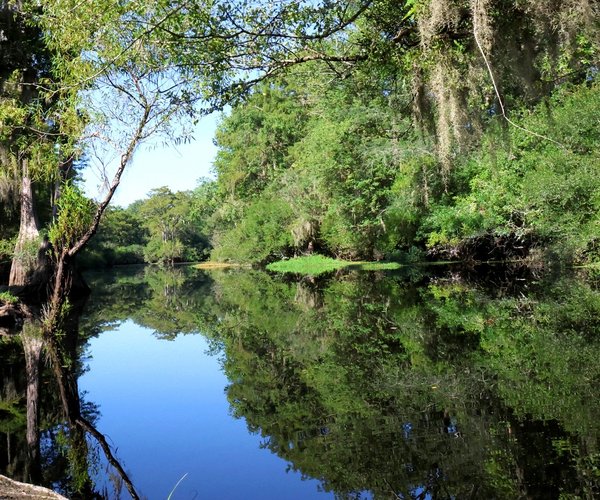Right whales at a glance
• Right whales are baleen whales with a bow-shaped lower jaw and a head that is up to one-quarter of the body length.
• They have no dorsal fin. They breathe through two blowholes on top of their heads. The blowholes create a unique V-shaped blow.
• Calves weigh approximately 1 ton at birth. Adults can reach 70 tons and 50 feet in length.
• Right whales were nearly driven to extinction by commercial whaling in the late 19th century. (Whalers began calling them right whales because they were considered the right whales to kill - easy to harvest and yielding large amounts of oil and baleen.) Commercial harvest was banned in 1935.
• North Atlantic right whales are protected under federal (Endangered Species and Marine Mammal Protection acts) and Georgia state law. Right whales also are a priority species in Georgia’s State Wildlife Action Plan, the blueprint for conservation in the state.
• Georgia adopted the right whale as its state mammal in 1985. Right whales are usually found 3 to 30 miles of the state’s coast during December through March.
—Information provided by DNR
BRUNSWICK—One of the world’s rarest marine mammals is returning to Georgia’s coast. A North Atlantic right whale was seen off South Carolina on Nov. 22, the first of a watery winter migration.
Biologists from Sea to Shore Alliance spotted the 29-year-old female right whale during an aerial survey offshore of South Carolina. The whale, known as “Half-Note,” has had four calves and could be pregnant with her fifth. Each right whale can be identified by the unique white pattern on its head.
Right whales swim from Canada and New England each year to bear their young along the coast of Georgia, South Carolina and northeastern Florida. Calving season is crucial for this endangered species, which numbers possibly as few as 400 animals.
The Georgia Department of Natural Resources’ Nongame Conservation Section, Law Enforcement Section and Coastal Resources Division help federal and other agencies monitor the population, respond to injured, entangled and dead whales, collect genetic samples for research, and protect habitat.
DNR wildlife biologist Clay George, who heads DNR’s right whale research and monitoring efforts, said cooler weather and water temperatures last winter pushed many of the whales farther south, deeper along the Florida coast. Warmer weather is forecast for winter 2011-12.
“If that holds true,” George said, “we might expect the whales to be more abundant off Georgia this winter.”
Right whales, which can weigh up to 70 tons and reach 50 feet in length, seldom come within sight of land in Georgia, but boaters often see them.
Because ship strikes are a leading cause of right whale injuries and deaths, the federal speed limit for vessels 65 feet or longer is 10 knots at certain times of the year in seasonal management areas, including Nov. 15-April 15 in the southeastern U.S. calving area (www.nmfs.noaa.gov/pr/shipstrike).
Recreational fishing and other small boats can pose a risk to the whales. Although these boaters are not required to heed federal speed restrictions, the National Oceanic and Atmospheric Administration recommends they follow them, and keep a sharp lookout for whales.
Patricia Naessig, a Sea to Shore biologist who has flown the right whale aerial surveys off Georgia for the past 10 years, hopes that boaters will keep right whales in mind when venturing off the coast this winter.
“Since right whales are so dark in coloration and have no dorsal fin, it can be very difficult to spot them from the water,” Naessig said.
“You would think that you could easily sight a 50-foot whale, but it is amazing how easily these whales can seemingly appear from nowhere.”
By federal law, all boats and aircraft must keep at least 500 yards from North Atlantic right whales. Sightings of dead, injured or entangled whales should be reported to NOAA by calling (877) 433-8299.
More than 150 individual right whales, including 21 calves, were seen off the southeastern U.S. last winter. While the population is increasing at an annual rate of 2 percent, there are fewer than 100 breeding females.
Five whales were spotted entangled in commercial fishing gear in the Southeast last winter. DNR, NOAA and other partners freed one of the whales, which was entangled in gillnet gear. Five mortalities were documented last winter. Two whales died from entanglements and one died from a ship strike.
Florida-based Sea to Shore Alliance partners with NOAA and Georgia DNR to fly aerial surveys off South Carolina and Georgia each winter.
Surveys along the South Carolina coast are funded by NOAA and the S.C. Ports Authority. Surveys along the Georgia coast are funded by NOAA and the DNR.








